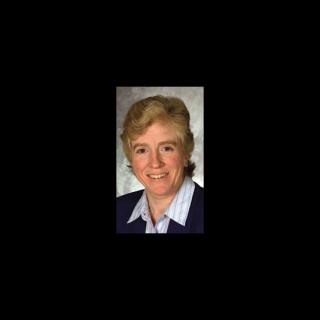Day 1
By Annette Marquis
UU Living Legacy Civil Rights Pilgrimage: Birmingham, Alabama
Today forty Unitarian Universalists (UUs) are converging on Birmingham, Alabama. They are arriving from eight Unitarian Universalist Association (UUA) districts representing thirteen states and one Canadian province. Exactly one-half are ministers and three more are ministerial candidates. Four are employed by the UUA. A couple, UUA President Bill Sinkford and UUA Moderator Gini Courter, were elected by the UUA General Assembly to lead our Association. All are active in their congregations, their districts and/or our national organization. Several young adults and a significant number of senior citizens are part of the group. 25% identify as people of color and 75% identify as white. Another 25% also identify as gay, lesbian, bisexual or transgender. Although 38% currently live in the South, only a couple were actually born and raised there. A few claim to have never even visited the South. So what do all these different people from around the UU world have in common? All of them are committed to learning more about the Civil Rights Movement of the 1950s and 60s and its impact on our 21st century world. Today is the start of the 2009 Unitarian Universalist Civil Rights Living Legacy Pilgrimage.
The Living Legacy Pilgrimage is another step on a journey that began over forty years ago when UUs ventured, by design and by circumstance, into the midst of a revolution, one that is far from over but that reached an important milestone this past year with election of Barack Obama, the first African American president of the United States.
Rev. Gordon Gibson was one of those UUs who lived and breathed the Civil Rights Movement. Gibson, along with his wife, Judy, witnessed the might of peaceful protest as it stood its ground against a sea of violence and hatred. As a result of their experiences, Gordon and Judy Gibson have a deep commitment to educating other UUs about this period of history. They have organized and led four previous civil rights tours.
It was during the tour in 2008 that the idea for the Living Legacy Pilgrimage was born. Several participants on that tour, including Rev. Hope Johnson, Janice Marie Johnson, Annette Marquis, and Rev. Wendy Pantoja, began talking about the importance of this piece of U.S. and UU history, and asking questions about how it relates to our current UU commitment to anti-racism and social justice. Can we claim the important role we played in this history without addressing the fundamental questions of how much progress we have made toward becoming an anti-racist, anti-oppressive, multi-cultural institution? What is the relationship between our civil rights legacy and the current state of our Association as it relates to race?
We UUs have an incredibly rich legacy of courage, strength, fortitude, and commitment in the struggle for civil rights. From James Reeb and Viola Liuzzo—who gave up their lives—and many, many other UU ministers and lay people who put themselves at risk for this struggle, we have every right to be proud ofthis piece of our history. But what the planners of the Living Legacy Pilgrimage decided is that we cannot rest there. We cannot live on our legacy. We have to find ways to keep that legacy alive by living in ways that honor these heroes of our faith.
Although many UU congregations are actively engaged in social justice and anti-racism work, the reality is that our congregations remain predominately white, middle-class establishments. Somewhere we have to find the courage to step out of our comfortable lives, out of our safe congregations, and take the risks we need to take to move us closer to the world we want to create. It will not happen if we sit idly by. These people knew that. They put their lives on the line to make their dreams of a brighter future see the light of day.
At the 2007 General Assembly in Portland, Oregon, UUA President Bill Sinkford asked these questions when speaking about the Black Empowerment Controversy of the late 1960s: “With whom do we need to be reconciled?” “Doesn’t our moral balance sheet still carry an unpaid debt?” Sinkford pointed out that for many at that time, both black and white, there was a real sense of betrayal. And he acknowledged that he left our movement for a time because of these feelings. Yet, he cautioned, “Merely writing a check won’t heal the wounds. Telling the story—truth to reconciliation—is needed.”[i]
For many of us who have visited Selma, Alabama, this is a sacred place, because of the human sacrifice that took place there and, for UUs, because of our own sacrifices to the important cause of racial equity.
And what is our faith community’s relationship to Selma? In some ways, Selma has become a metaphor that proves that we (white UUs, in particular) are good, justice-seeking people even if we are not engaged in any racial justice work today. We continue to live on the legacy of Selma without substantive commitment in our congregations to address the issues of race and racism internally or externally. How many times have our ministers over the past forty years invoked Selma in a sermon as an example of living our faith? What do we owe the people of Selma today as a result of our claim on their history? What is the true impact of Selma on the UUA today?
This is a pilgrimage of inquiry and discovery. We plan to address the questions posed above, and many more, this week as we listen to those who are veterans of the Movement, as we walk on the sacred ground where so many walked before us, and as we talk and plan among ourselves to turn this historic legacy into a living reality of a justice-seeking, equity-promoting, multi-cultural UUA in the twenty-first century.
Annette Marquis is District Executive for the UUA Thomas Jefferson District, and one of the leaders of the UU Living Legacy Civil Rights Pilgrimage.

